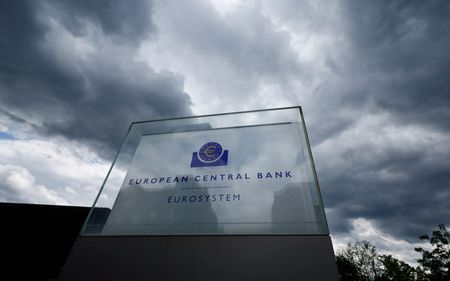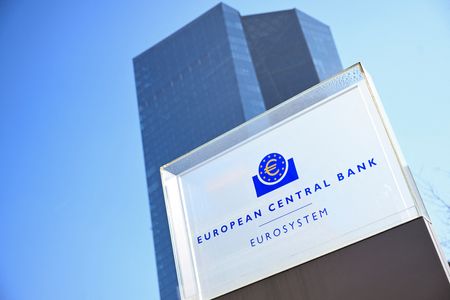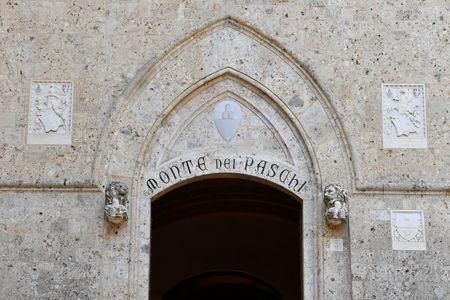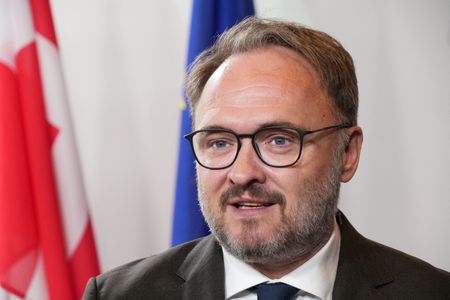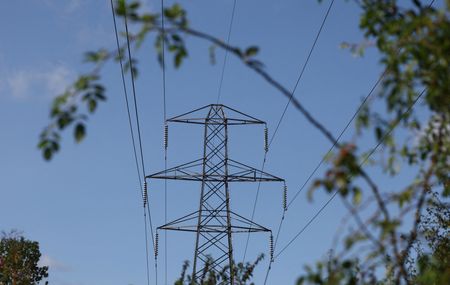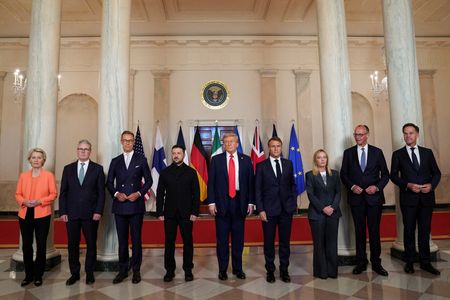By Balazs Koranyi and Francesco Canepa
FRANKFURT (Reuters) – The European Central Bank left interest rates unchanged on Thursday as expected and maintained an upbeat view on growth and inflation, dampening expectations for any further cut in borrowing costs.
The ECB halved its key rate in the year to June but has been on hold at 2% since, arguing that the economy of the 20-country euro zone is in a “good place” even if all policy options, including additional easing, could not be ruled out.
Recent data has confirmed this sanguine view, giving policymakers time to understand how U.S. tariffs, higher German government spending, looming Federal Reserve rate cuts and political turmoil in France might impact growth and inflation.
“We continue to be in a good place,” ECB President Christine Lagarde told a press conference, adding that inflation was where the ECB wanted it to be and the domestic economy solid.
Uncertainty about global trade had eased after a number of U.S. tariff deals, she said, including the European Union’s own agreement which set a 15% duty on most U.S. imports of EU goods.
While the ECB still sees inflation dipping below its 2% target next year, investors curbed rate-cut bets after Lagarde said risks were more balanced.
“Two things have clearly moved out of our radar screen when it comes to downside risk,” Lagarde said. “The first one is the risk of European retaliation, the second thing … is that trade uncertainty has clearly diminished.”
Money markets are now pricing in just a 40% chance of one last rate cut by next spring, less than before Thursday’s decision, even while they expect the Fed to ease U.S. borrowing costs six times by the end of 2026.
INFLATION BELOW TARGET
The ECB now sees inflation at 1.9% in 2027 – below the 2.0% projected in June – with core inflation at 1.8%, also below the central bank’s 2% target.
Lagarde played down the significance of such a miss, saying: “We have indicated very clearly in our strategy that minimal deviations, if they remain minimal and not long-lasting, will not necessarily justify any particular movement.”
The public debate is in any case focused on just a single rate cut, indicating that the ECB is almost done with changes to monetary policy and that rates are likely to stay around current levels for an extended period.
“We do not believe the ECB’s reaction function is geared towards fine-tuning policy, and, in our baseline, expect a prolonged period of inaction on policy rates,” Pimco Portfolio Manager Konstantin Veit said.
Lagarde in her press conference described risks to the economy as “more balanced” than in June but said the inflation outlook was still more uncertain than usual.
Hawkish Governing Council members, who oppose further easing, say the economy has been unexpectedly resilient in the face of trade tensions and that growth is well supported by buoyant private consumption.
But their more dovish colleagues argue that tariffs have yet to fully work their way through the economy and could dampen an already low growth rate, reversing the rise in consumption.
They say the Fed’s looming rate cuts could also put downward pressure on prices by supporting the euro against the dollar.
Fresh political chaos in Paris, which has pushed French bond yields sharply higher, is another headache for the ECB.
It has tools to intervene, but only for an “unwarranted and disorderly” rise in borrowing costs, which economists say is clearly not the case now, given France’s high debt and feeble economic growth.
Asked to comment on France and the possibility of ECB intervention, Lagarde said on Thursday that euro zone sovereign bond markets were orderly and functioning with smooth liquidity.
(Writing by Balazs Koranyi; Editing by Catherine Evans)

